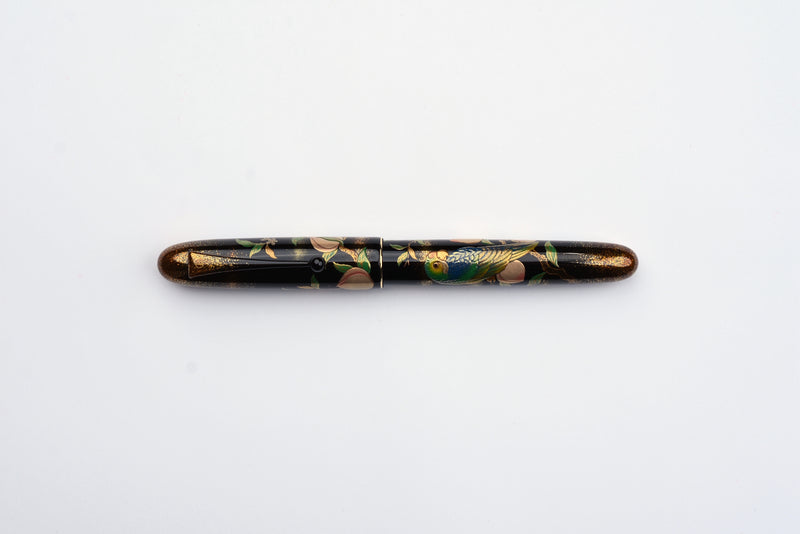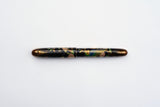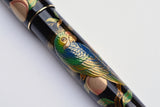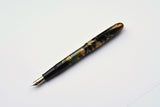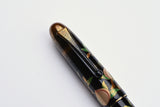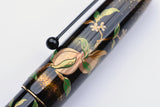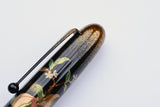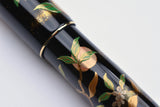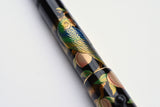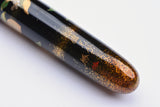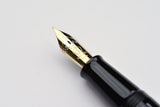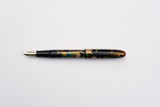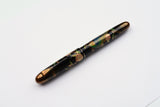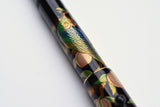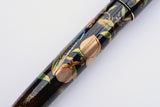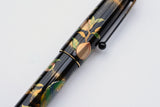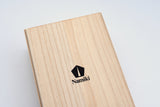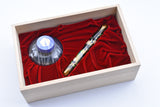Pilot Namiki Yukari Royale Fountain Pen - Parrot with Peach.
This pen displays a colorful parrot comfortably nestled among peach branches. The parrot's feathers are beautifully detailed with delicate gold lines, and the peaches seem to glow with a dusting of fine gold powder. Namiki Yukari Royale - Parrot with Peach was made by master maki-e artist Masaru Hayashi.
The pens in Namiki's Yukari Royale Collection feature elegant designs on a large ebonite body and size #20 18k gold nib. The motifs are created through the highly advanced Togidashi-Taka Maki-e technique (Burnished-Raised Maki-e), also applied in the creation of pens in Namiki's Emperor collection. First, Togidashi Maki-e (Burnished Maki-e) is used; the background and scenery are painted with lacquer, which are then sprinkled with gold or silver powder and sealed with Urushi lacquer. After drying, the surface is lightly burnished with charcoal, revealing the design underneath. Then, the main design is further rendered through additional use of materials like lacquer and charcoal powder. Finally, Hira-Maki-e (Flat Maki-e) is used to create the last details with layers of metal powder and lacquer. (The Pilot-Namiki website also provides a fascinating peek into the steps of the process here.)
The making of a maki-e piece is an extremely labor- and time-intensive process involving a repetitive series of applying layers of lacquer, drawing the design outline, sprinkling gold and silver powders to fill in the designs, and polishing to achieve a lustrous surface. The lacquered main design is filled in with the carefully sprinkled gold and silver powders, and then several additional layers of lacquer are applied. Once these layers harden, the surface is polished many times. A finished product can take up to 3 months, and some of the pieces go through the repetitive lacquer-drawing-sprinkling-polishing process up to 130 times.
- #20 18k two-tone gold nib
- Comes with CON-70 and spare cartridge
- For a close-up and 360-degree view of the motif, feel free to refer to its listing on Pilot-Namiki's website here
- Compatible cartridges can be found here: Pilot/Namiki Fountain Pens
- More from the Namiki Yukari Royale Collection

